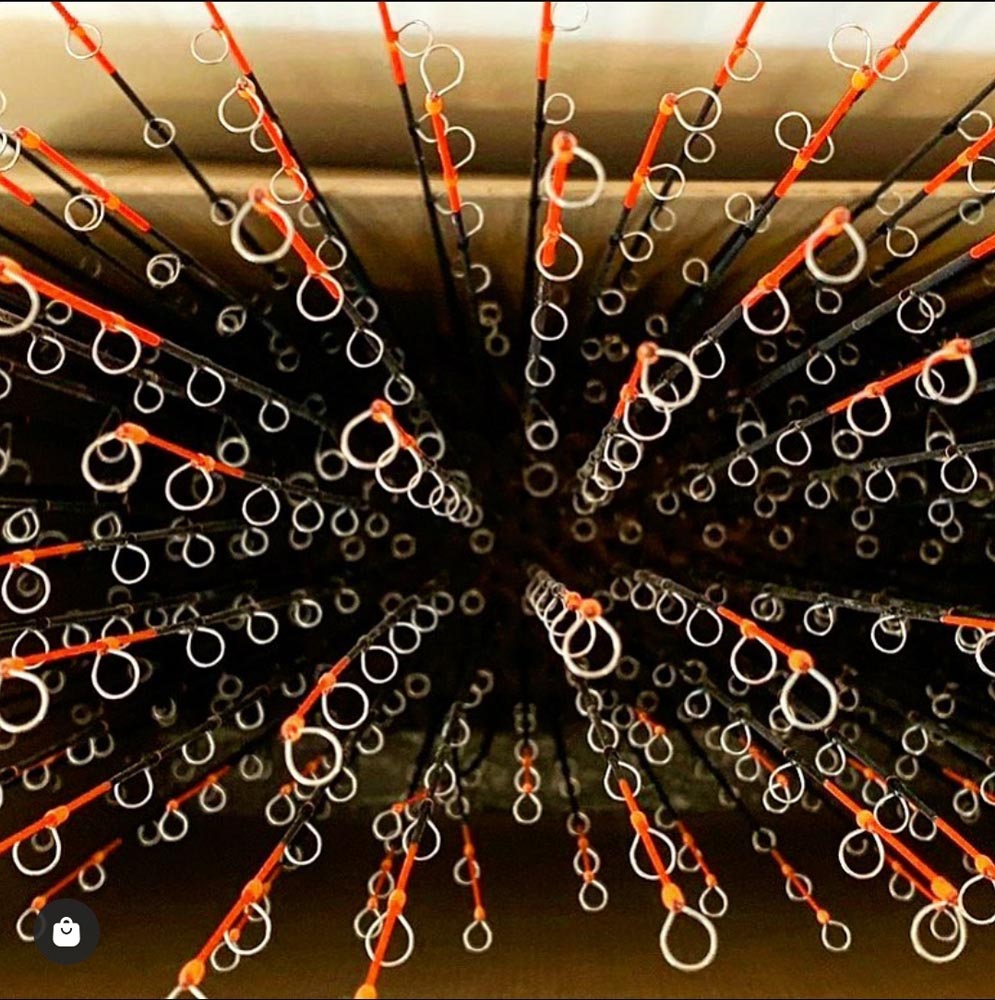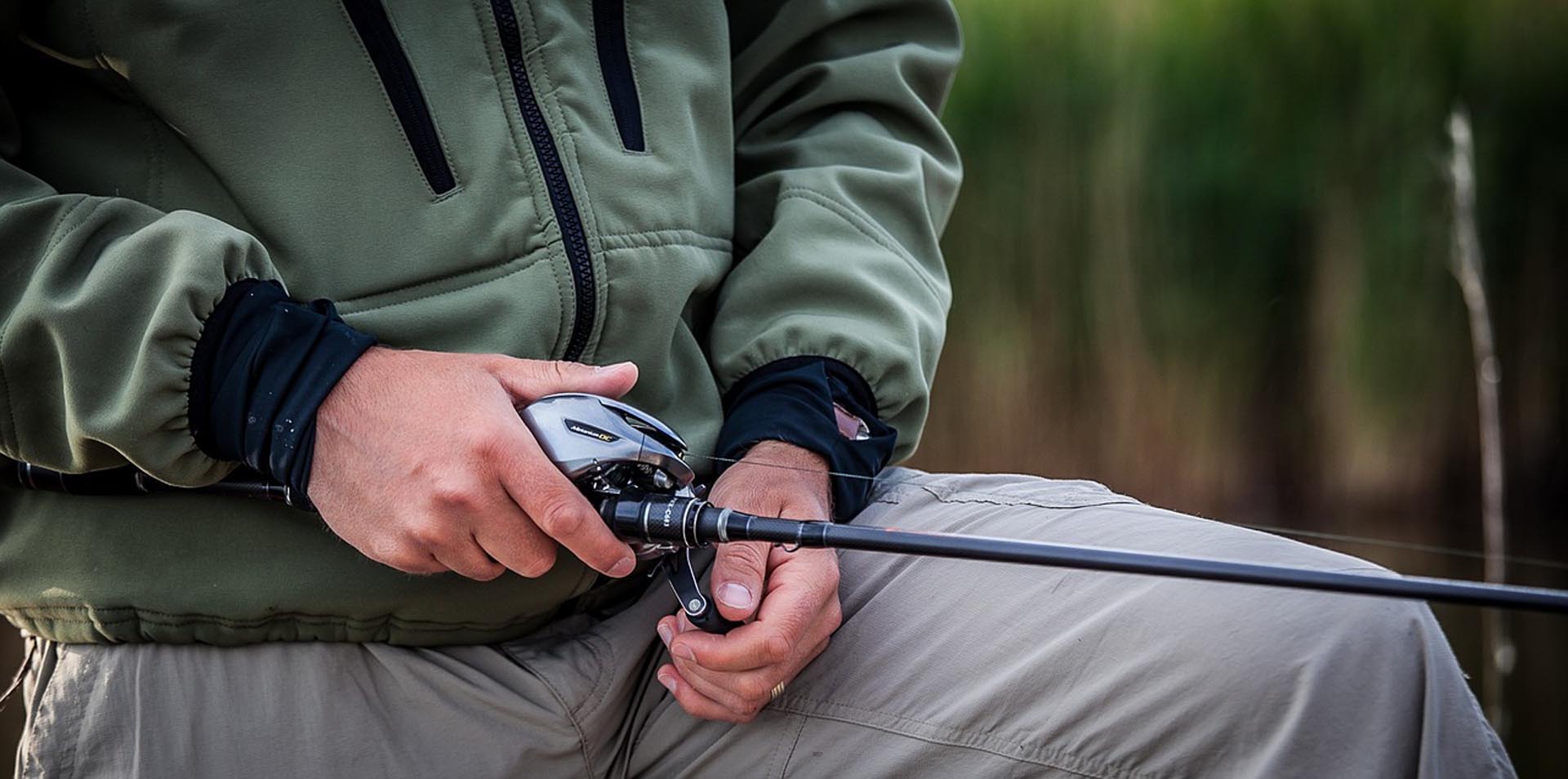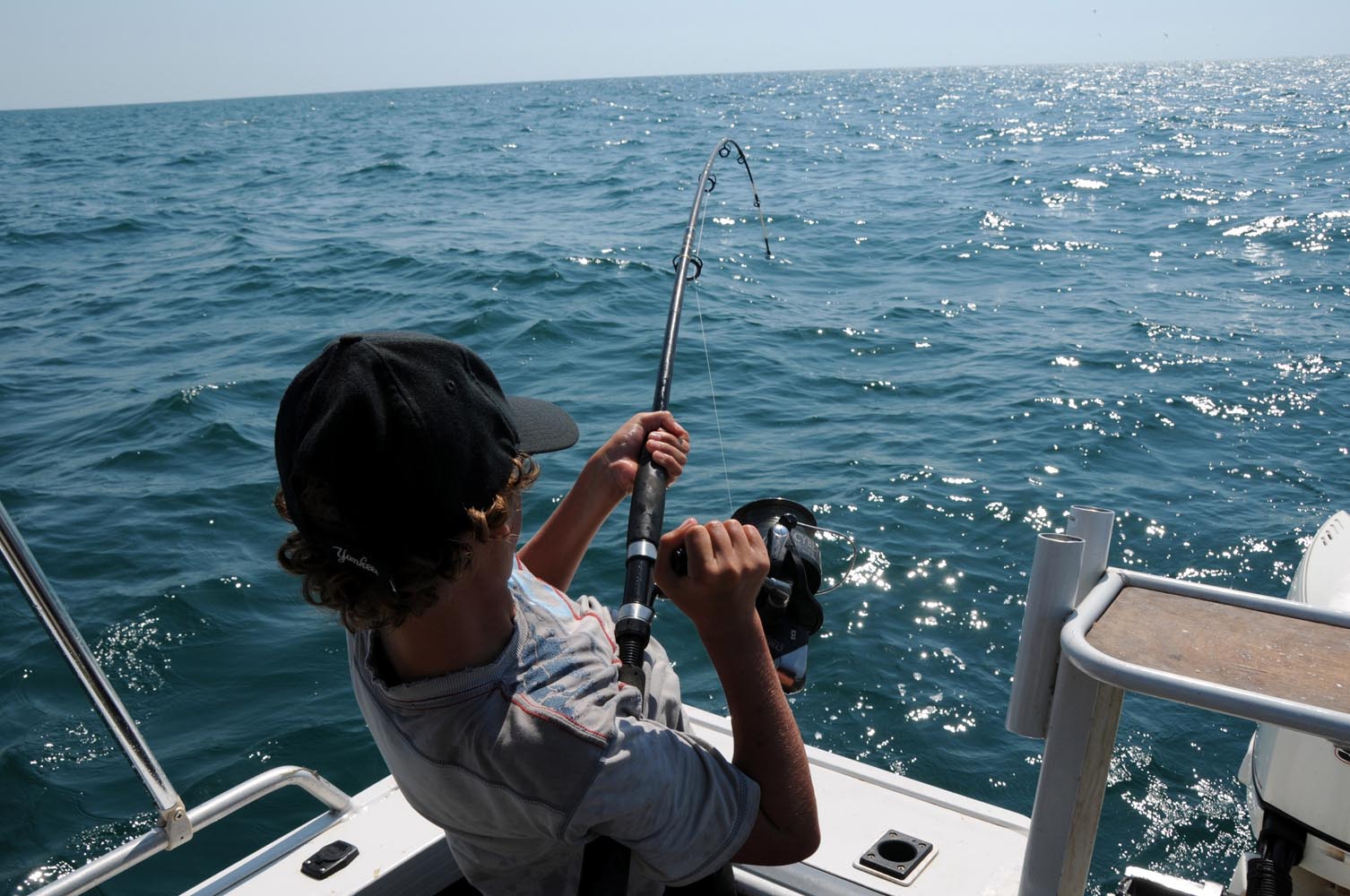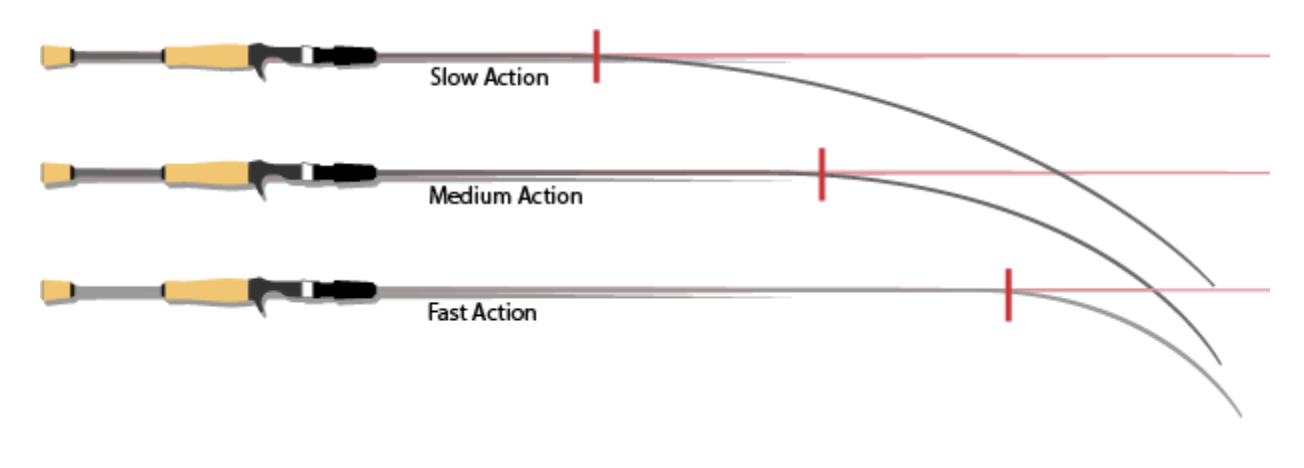Fishing Rod Selection
 Fishing has been around for thousands of years, and throughout history humans have evolved in terms of the way we fish. Techniques and equipment are always constantly evolving. In today’s modern world, there is a rod built specific for every fishing style.. We have been asked, what is the best well rounded fishing rod? The answer is that there is no perfect rod that can do everything. To top this off, you would not want to fish with a rod that “can do it all”. Rod selection comes down to the species of fish you are planning to target and the method of fishing you prefer to use to catch fish!
Fishing has been around for thousands of years, and throughout history humans have evolved in terms of the way we fish. Techniques and equipment are always constantly evolving. In today’s modern world, there is a rod built specific for every fishing style.. We have been asked, what is the best well rounded fishing rod? The answer is that there is no perfect rod that can do everything. To top this off, you would not want to fish with a rod that “can do it all”. Rod selection comes down to the species of fish you are planning to target and the method of fishing you prefer to use to catch fish!
Rods and reels are two of the most expensive components of fishing, therefore selecting the perfect rod can be one of the most bewildering experiences. A good rod may not make you a better angler, however selecting a poor rod will be a limiting factor for any angler.
While buying a expensive rod might not instantly make you a world class professional fisherman, using an incorrect rod will make it harder for you to land fish. One of the most important reasons to have the correct type of rod is to detect bites easier. If you are not using the right type of rod, you will often confuse snags and hang ups with a bite. This is never any fan and can be embarrassing. Below is everything you will need to know about rod selections and to find the best rod that suits you.
How to Read Rod Specs
High quality rods almost always have 3 sets of number printed just above the handle. The first set of numbers portray the rods model number followed by the length of the rod and type. The second set of numbers represent the “Action” or “Power” of the rod. The last line typically indicates the suggested line test rating and finally the suggested weight of the lure. You must clearly identify these important sets of number when looking at the rod as this will dictate the perfect rod for fishing the method of your choice.
Fishing Rod Length
Determining your fishing rod length is the first identifier when selecting a new piece of equipment. Fishing rods can range from 4 feet all the way up to 14 feet, but most trout rods tend to run between 6 to 9 feet from tip to butt. The general rule of fishing rod length is based on casting distances:
Shorter the rod = shorter casting distance
Longer the the rod = longer casting distance
 Generally speaking, shorter rods are better for fishing smaller waterways or if you are fishing in tight spots along river banks with overhang. The short body allows for better close combat type of fishing, you will find anglers fishing from boats or kayak prefer shorter rods. It is easier to maneuver if distance casting is not a big factor.
Generally speaking, shorter rods are better for fishing smaller waterways or if you are fishing in tight spots along river banks with overhang. The short body allows for better close combat type of fishing, you will find anglers fishing from boats or kayak prefer shorter rods. It is easier to maneuver if distance casting is not a big factor.
On the flip side, longer rods can help you cover more water and achieve great casting distances. Saltwater anglers who fish from piers or the beach will very often use longer rods.
Fishing Rod Materials

Fishing rods are typically made from graphite, fiberglass, or a combination of both. Although there are other exotic materials used such as bamboo all the way to carbon fiber we will focus on the general materials used. Graphite rods are typically lighter and stiffer, however they tend to break more easily than fiberglass. The upside is that the brittleness and light weight of graphite rods make them more sensitive and is generally better at detecting light bites. Fiberglass rods on the other hand have a more flexible tendency and can take a lot more to break them. Anglers whom fish in a multitude of conditions and environments usually opt for rods with a hybrid combination of both materials.
What is a Rods “Power” Rating?

The power of a rod describes how much weight it takes to bend the rod. The first letter usually refers to how stiff or powerful the rod is. The larger the fish you are targeting means the more power is required in a rod. The power is its resistance to bending and is also known as the rod weight. The codes below are what you will find most commonly:

UL – Ultra Light (small fish in the 1-2lb range)
L – Light ( small/medium fish in the 2-4lb range)
ML – Medium Light ( medium sized fish in the 3-6lb range)
M – Medium (medium sized fish in the 5-12lb range)
MH – Medium Heavy (medium/large fish in the 12-20lb range)
H – Heavy (large fish in the 15-30lb range)
EH – Extra Heavy (very large fish in the 30+lb range)
You would want a rod with a stiffer backbone, or more power to fight larger fish. While light or ultralight rods are geared more towards smaller species like trout and panfish as the rod has much more bend, and can detect bites much easier. Medium rods are good for finesse fishing where you will be throwing spoons, crankbaits, or spinners. Heavier rods are best suited for bottom fishing and throwing large lures such as jigs or topwater lures.
What is a Rods “Action”?

The action of the rod is best described as the point of where the rod begins to bend. This is not to be confused with the “power” of the rod. The action is the placement of where you prefer the bend to begin. Lets break this down:
A “fast” action rod, bends closer to the tip
A “Slow” action rod, bends closer to the handle.
The action or the bend of a rod is essential for 2 main reasons. Firstly, the bend allows you to constantly put pressure on the hooked fish so that the hook does not pop out. The second reason is to provide a specific backbone in order to cast certain lures.
When throwing big baits or lures, it is recommended that a fast action rating is used. While on the other hand, when fishing smaller lures, a medium or slower action is preferred so that the action can provide the momentum to achieve casts.
Tips On Choosing The Right Rod For You
Now that you are armed with the understanding of the basics of how to read fishing rod specs, you probably already have an idea what type of rod you are deciding on.
Since fishing rod brands have their own methods of rod ratings, you will find that every rod will handle slightly differently from one brand to another. No one is better suited to select the perfect rod for you other than yourself, your rod selection comes down to your fishing style and your personal preferences. Firstly determine the species you are deciding to target, and how you decide to target them.
You can decide on the type of rod according to your preferred style of fishing:
Once you decide on your method, determine your budget. Remember that an expensive rod will not always make you a better angler, however choosing rods with specific characteristics will provide you with a better edge when it comes to performance.
Start by going to your local fishing shops and test out different brands and specs until you find a rod that best suits you.
You will find there are plenty of fishing rod brands on the market, varying in prices. Because the selections can be somewhat intimidating, we have broken down all the rods that we have fished with and we deem the best value and performance.
Spin Casting Rods
Daiwa Presso
The Daiwa presso is hands down one of our favourite spin casting rods for trout and bass. The presso is a beautifully crafted ultra-light rod that has a very unique characteristic, it has plenty of backbone when casting, however it is extremely flexible and sensitive, so that even the smallest bite can be detected. This is a perfect rod for finesse lure casting, even though it is rated as an ultralight – we have landed large 10lb salmon with the Presso! The presso is one of our all time favourite spinning rods and deserves a spot within your arsenal.
Shimano Clarus
The shimano Clarus is a great intermediate rod for those who are targeting salmon. The Clarus is a great overall rod that can be used to fish many different methods from spin casting to bottom fishing. It is the perfect rod for salmon fishing or targeting medium sized trout or bass! The Clarus is one of our favorite rods for any type of environment, we call it our work horse – it can take a beating!
Gloomis E6X
The G.Loomis E6X has been one of the best spin casting rods we have used. It is a benchmark model for high quality spin casting rods. The E6X is extremely tight, and sensitive allowing for casting massive distances, while still providing an amazing hook set all the while keeping the rod bent in the right places for that secure hook placement. We have put many fish into our hands with the E6X from small trout up to 20lb chinook salmon.
Float Fishing Rods
Okuma SST Technique Specific
We have fished with the Okuma SST during our salmon trip to Stamp river. The SST is a floating rod that is light and easy to cast. It is light and nimble allowing for casting all day long. The SST is a great starter rod for anyone wanting to get into the sport of float fishing. For the price the OKUMA SST is great value!
GLOOMIS IMX
The Gloomis IMX drift rod is the ferrari of all drift rods – We have used it extensively and it holds the top spot for our choice of drift rods. It is both light and nimble, with a powerful backbone this rod can handle some pretty serious fishing. Although it is on the higher end of the price spectrum we suggest this rod for anyone looking to have a rod that will handle like a dream. Gloomis also provides lifetime warranty for any rods that break due to manufacturer defect or if breaking from a fish.
Gloomis E6X
The G.Loomis E6X has been one of the best spin casting rods we have used. It is a benchmark model for high quality spin casting rods. The E6X is extremely tight, and sensitive allowing for casting massive distances, while still providing an amazing hook set all the while keeping the rod bent in the right places for that secure hook placement. We have put many fish into our hands with the E6X from small trout up to 20lb chinook salmon.







